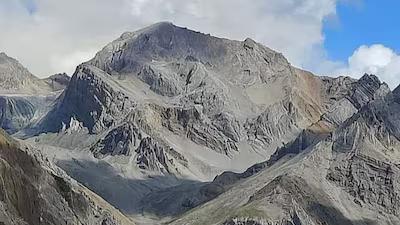
Mountains, including Himalayas, warming 50% faster: Study
The world’s mountain ranges, including the iconic Himalayas, are experiencing a rapid increase in temperature, with warming occurring at a rate 50% faster than the global average since 1950. This startling revelation comes from a recent study that highlights the alarming impact of climate change on high-elevation regions. The research, conducted by a team from the University of Portsmouth, sheds light on the phenomenon of “elevation-dependent climate change,” which is caused by a combination of factors, including sunlight reflection, humidity, and particles in the air.
The study’s findings are a cause for concern, as mountains are not only warming at a faster rate but also drying faster and losing snow more quickly than low-lying areas. This has significant implications for the environment, ecosystems, and human populations that rely on mountainous regions for water, food, and other essential resources. The Himalayas, in particular, are a vital component of the Earth’s ecosystem, providing freshwater to over 1.3 billion people and supporting a vast array of plant and animal species.
The researchers behind the study used a combination of observational data and computer simulations to analyze temperature trends in mountainous regions around the world. They found that the rate of warming at high elevations has been consistently higher than the global average, with some areas experiencing temperature increases of up to 1°C per decade. This accelerated warming is attributed to a range of factors, including the reflection of sunlight by snow and ice, changes in humidity, and the presence of aerosol particles in the atmosphere.
One of the primary drivers of elevation-dependent climate change is the phenomenon of “snow-albedo feedback.” This occurs when snow and ice at high elevations reflect sunlight, cooling the surrounding environment. However, as temperatures rise and snow cover decreases, the amount of solar radiation absorbed by the Earth’s surface increases, leading to further warming. This self-reinforcing cycle is exacerbated by the fact that mountains are often more sensitive to climate change due to their unique geography and microclimates.
The study’s authors also noted that the rapid warming of mountainous regions is having a profound impact on ecosystems and biodiversity. Many plant and animal species that are adapted to the cooler, more stable conditions found at high elevations are struggling to cope with the changing climate. This can lead to a range of negative consequences, including the loss of habitat, reduced population sizes, and even extinction.
In addition to the environmental impacts, the study’s findings also have significant implications for human populations. Mountains are often home to communities that rely on natural resources, such as water, timber, and minerals, for their livelihoods. As the climate continues to change, these communities are facing increasing challenges in terms of food security, water availability, and economic stability.
The researchers behind the study are calling for urgent action to address the issue of elevation-dependent climate change. This includes reducing greenhouse gas emissions, protecting and restoring natural habitats, and supporting communities that are vulnerable to the impacts of climate change. By working together to address this global challenge, we can help to mitigate the effects of climate change and preserve the natural beauty and biodiversity of our planet’s mountainous regions.
In conclusion, the study’s findings are a stark reminder of the need for immediate action to address the pressing issue of climate change. The rapid warming of mountainous regions, including the Himalayas, has significant implications for the environment, ecosystems, and human populations. As we move forward, it is essential that we prioritize the protection and preservation of these vital regions, not just for the sake of the planet, but for the well-being of future generations.






